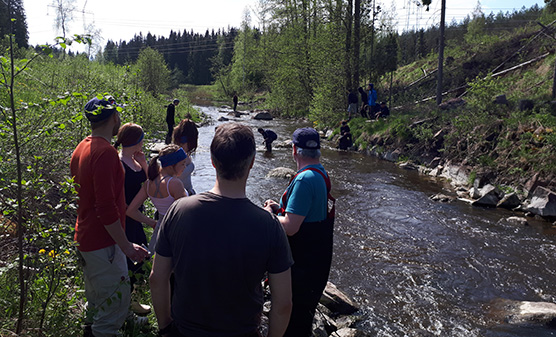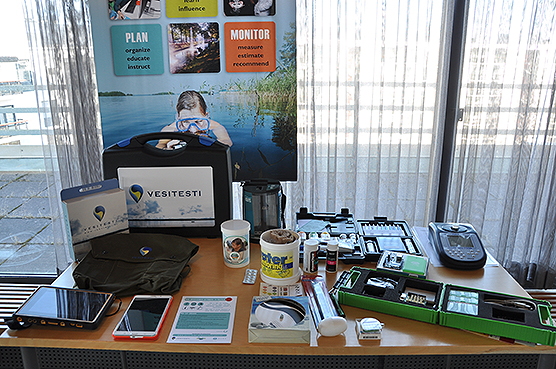The Water monitoring kits’s materials were translated into Russian to enable better cooperation. Such kits help to measure water transparency, temperature, algal situation, turbidity, pH and oxygen. One just needs to print instructions and buy Secchi disks and a World water monitoring challenge kit.
School cooperation started in the SEVIRA project in May 2019. Finnish schools from Virojoki and Joutseno visited the rivers Rakkolanjoki and Virojoki to monitor water quality, quantity and species. At that time, there were only Finnish instruction available. For the spring 2020 there were plans to organise field trips to neighboring countries from both Finland and Russia. Due to the COVID-19 pandemic, the field trips were postponed until 2021. Next time there will be both Russian and Finnish instructions for the Water monitoring kits and monitoring can be carried out together without language barriers. Furthermore, there will be a possibility to measure more accurately transparency by the schools than scientist did at early days.
Public monitoring can help to understand what changes takes place in water quality of the river Rakkolanjoki or Virojoki due to the COVID-19 pandemic. It will be interesting to see if there are any changes in water quality during 2020.
Please do remember to submit your observations to the Järvi-Meriwiki service (in Finnish) and discuss about results or compare your own Secchi-depth results with open data source results from Hertta (the information system of environmental data).
|
History of the transboundary river Rakkolanjoki
The scientific and technical cooperation started in the river Rakkolanjoki in 1955. At the time, salmon stocks of big rivers at Finnish side of the Gulf of Finland were vanishing. That was due to hydropower construction. The first transboundary agreement with the Soviet Union was signed in 1965. Soon after that water quality monitoring started in the river and probably the first observation was done on the July 7, 1966. Since then a few restoration activities has taken place to create areas for spawning and rearing of salmon and trout. |

A field trip to the river Rakkolanjoki in May 2019.

Water monitoring kit.